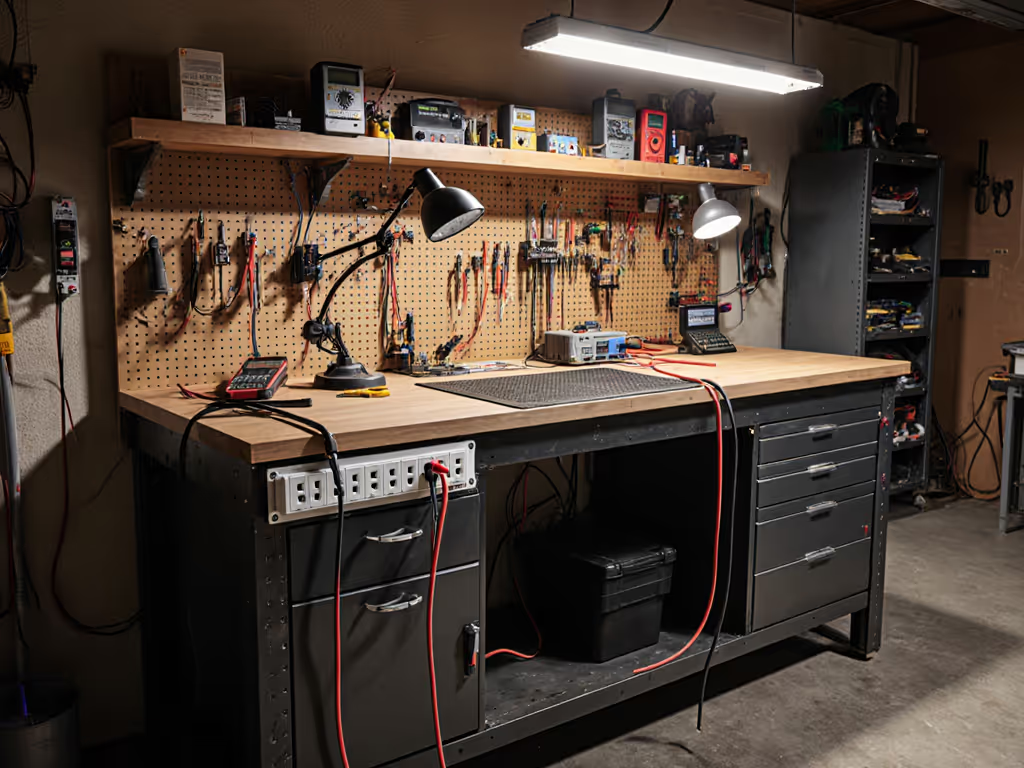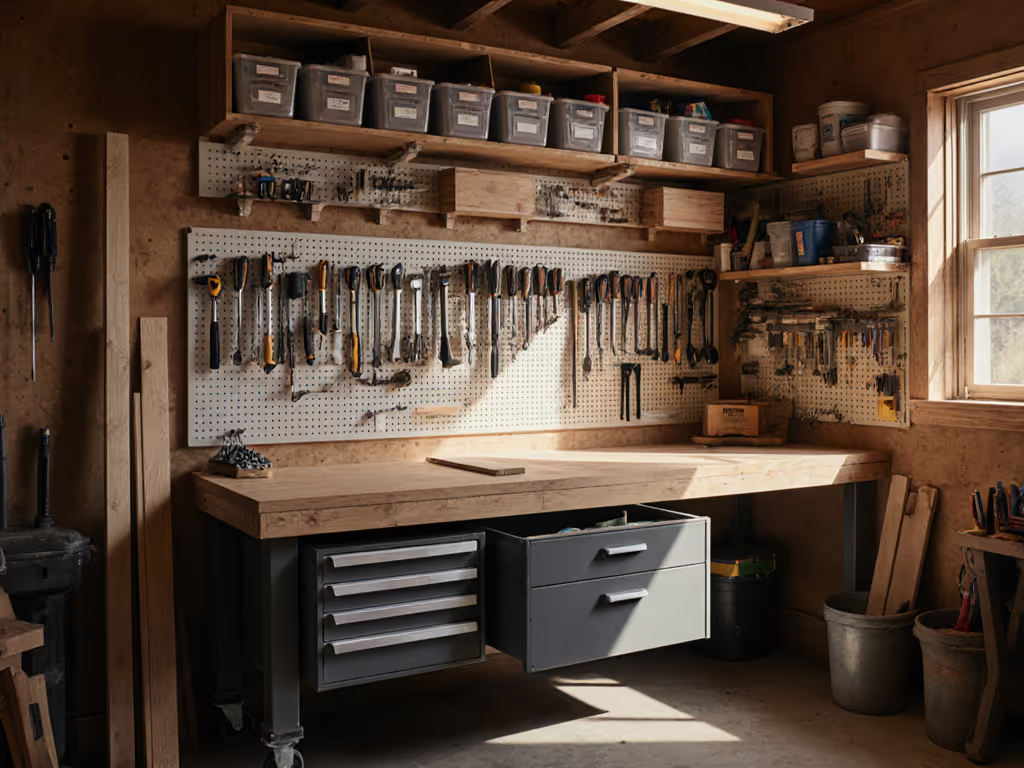
Mobile Workbench: Disability-Friendly Height Adjustability Guide

For woodworkers and makers with mobility challenges, selecting a workbench with precise height adjustability transforms shop accessibility. This guide analyzes critical engineering considerations (from load capacity to lockable mobility) that enable inclusive workshops while maintaining professional-grade precision. Understanding these specifications ensures workspaces adapt to the user, not vice versa. For an overview of mechanisms and ideal ranges, see our adjustable height workbenches guide.
1. Height Adjustment Range and Precision
- Optimal spans target 28" to 45" to accommodate seated and standing positions [1][2][5][7]. Valley Craft's 33" to 45" range (in 2" increments) suits diverse statures [1], while Seville Classics offers 1" precision adjustments for micro-ergonomic tuning [2].
- Crank mechanisms (e.g., SafeRacks' 29" to 38" system) minimize exertion for users with strength limitations [4].
2. Stability Under Operational Load
- Capacity ratings directly impact safety: | Model | Capacity | Frame Design | |-----------|-------|------------| | Valley Craft | 2,000 lbs | 14-gauge steel [1] | | Craftsman | 2,000 lbs | Butcher block top [3] | | SafeRacks | 500 lbs | Hardwood surface [4] |
- Anti-racking cross-bracing (IndustrialSupplies' reinforced legs) prevents deflection during planing or assembly [7].
3. Mobility Without Stability Compromises
- Locking casters with ≥3" diameters (e.g., phenolic swivel locks [1] or Husky's dual-braking wheels [8]) enable secure repositioning.
- Dual mobility modes: Global Industrial's stainless-steel benches use retractable casters plus leveling feet [6], eliminating instability trade-offs. Explore proven mobile workbench stability strategies to prevent wobble when rolling and when locked.
4. Surface and Clamping Adaptability
- Butcher block tops (Craftsman [3]) or 1.5" polyurethane-coated wood (Seville [2]) resist glue/dents while accommodating clamps.
- Edge profiles: Rounded safety edges reduce snagging during transfers [7], while T-track/20mm dog-hole compatibility enables adaptive workholding.
5. Cost-Per-Capability Scaling
Start lean: Seville Classics' $210 bench [2] delivers core adjustability. Valley Craft's 2,000 lb capacity [1] exemplifies long-term value, justifying its higher investment through decades of service. Modular upgrades (like adding bench dogs or vise plates) compound functionality without full replacement. To maximize clamping flexibility, compare 20mm vs 3/4 inch bench dog systems before you add holes or tracks.
Start lean, add interfaces, and compound the capability.
Next Step: Measure Your Ideal Height
Sit or stand comfortably with elbows bent at 90°. Measure from floor to forearm. This is your optimal work surface height [2][7]. Dial it in by task with our workbench height sizing guide. Compare to product specs before purchasing.
Final Analysis: Disability-friendly benches merge >30" height ranges, 3+ locking casters, and ≥1,000 lb capacities. Prioritize incremental upgrades (like retrofitting mass-loaded bases) to transform entry-level models into personalized professional stations.
Related Articles





Workbench Storage Hacks: Small Workshop Organization Made Simple
Apply a workflow-first system to a small workshop with seven practical storage hacks - triangle zones, one-touch tool access, rolling under-bench storage, shadow boards, and task-specific modules. Spend less time hunting tools and more time building with a clear-start ritual and space-smart overhead options.
